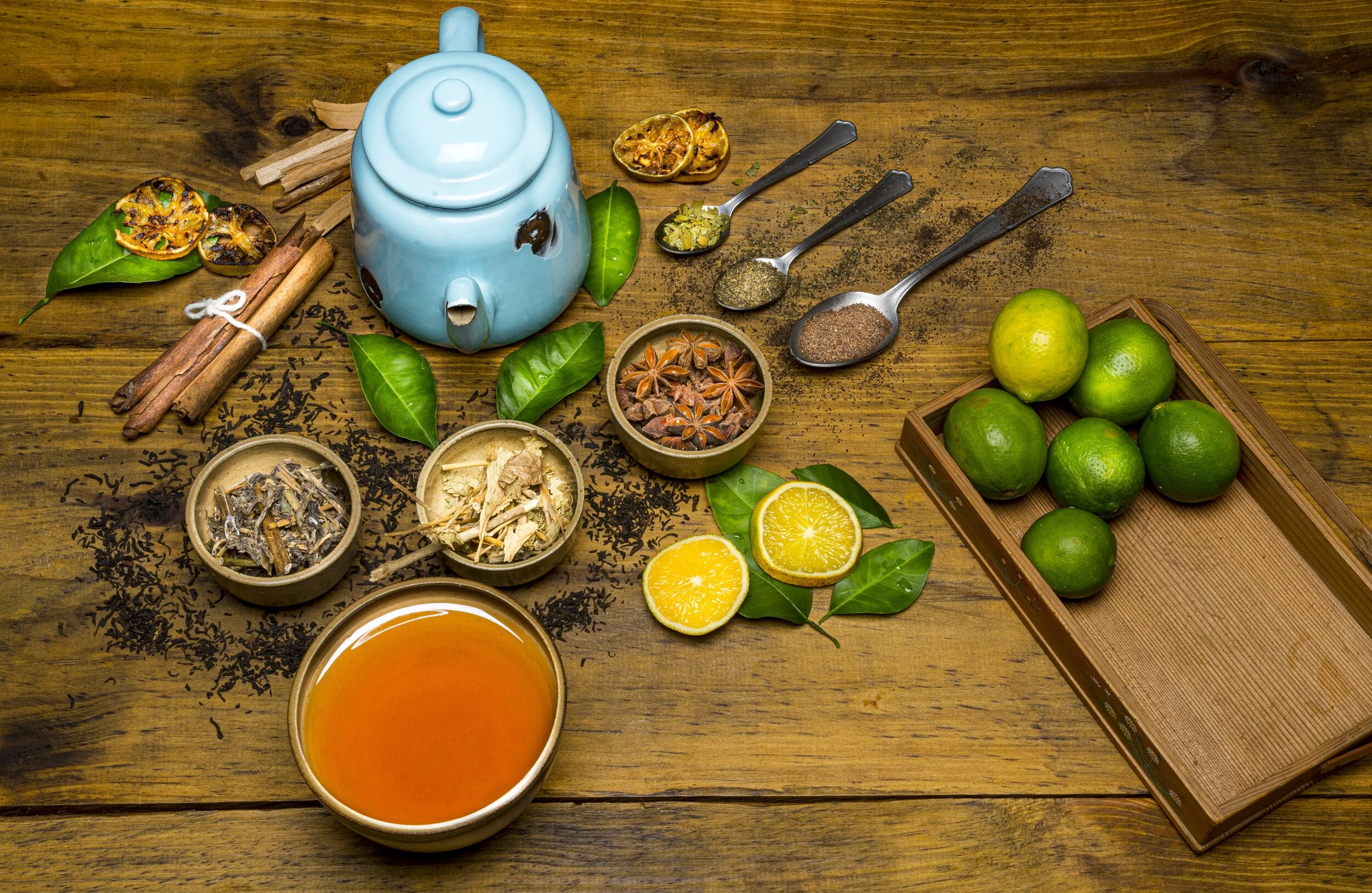Food Tasting 101
Are you someone who, as the saying goes, “eats to live or lives to eat”? Whether a sustenance seeker or passionate foodie, everyone needs nourishment on a daily basis to support our hectic lives. Are you aware that the taste of your food or drink also has important health value? Let’s take a minute out from those jam-packed daily activities and explore that connection.
Some of the most frequently used taste descriptions are bitter, sweet, pungent, salty and sour. According to Traditional Chinese Medicine, taste can have a bodily function, travel to particular meridians, associate with a season and relate to one of the following elements, which, unlike the taste descriptions, are probably not ones that you’ve heard of before: they are fire, earth, metal, water and wood.
How do they relate to taste, and how can all of them combine to affect your overall health?
Let’s start with the bitter taste. According to TCM, bitter can decrease heat and purify; it travels to the heart and small intestine meridians, associates with the early and mid-summer season, and connects to the fire element.
A favorite taste that we all recognize too well is sweet. Sweet can tonify the body by nourishing muscle and blood plasma; it travels to the spleen and stomach meridians, associates with the late summer season and connects to the earth element.
Pungent is a potent taste. Pungent can expel wind or cold and stimulate blood circulation; it travels to the lung and large intestine meridians, associates with the fall season and connects to the metal element.
Another popular flavor is the salty taste. Salty dissolves stagnations in the body and improves digestion; it travels to the kidney and urinary bladder meridians, associates with winter and connects to the water element.
Last, and in this case, probably least, is the sour taste. Sour moistens the GI tract and encourages saliva to produce; it travels to the liver and gall bladder meridians, associates with spring and connects to the wood element.
Is your meal intake primarily salty or mostly sweet? Have you forgotten what bitter tastes like? Not sure which foods to eat to stay healthy? Here are sample food and drink lists according to their taste from a Traditional Chinese Medicine or Ayurveda perspective:
Bitter: kale, mustard and collard greens, cucumber, alfalfa sprouts, pumpkin seeds, sesame seeds, rhubarb, orange zest, chamomile, cumin, dandelion, parsley, rosemary, coffee, green tea
Sweet: rice, lentil beans, adzuki beans, whole grains, cabbage, parsnips, squash, sweet potatoes, carrots, onions, almond butter, chestnuts, pecans, chia seeds, bananas, coconut flakes, dates, raw honey, rose water
Pungent: scallions, daikon radish, fresh ginger, wasabi, horseradish, cayenne, black pepper, paprika, balsamic vinegar, cinnamon, cardamom
Salty: spinach, seaweed, sea vegetables, shrimp, oysters, anchovy, miso, soy sauce
Sour: sauerkraut, lemon, lime, fermented foods, yogurt, apple cider vinegar
Pay attention to the tastes you consume daily. Notice if you might need more bitter or sour in your diet. Notice if you have too much sweet and salt in your diet. Need a little spice in your life? Try adding a pungent flavor to your meal. Taste test different food and drinks, and then carefully notice how you feel afterwards.
These ancient traditions can give valuable general nutritional guidance, but of course each one of us has very specific, very individual nutritional needs. Your body has its own innate wisdom when it comes to giving you feedback on what works and what doesn’t work.
So get back to all of the things that you’re juggling today, but feel free to taste away, and begin your budding new exploration of the connections between the variety of foods you ingest and your overall nutritional health!
“Everyone eats and drinks, but few appreciate taste.”

